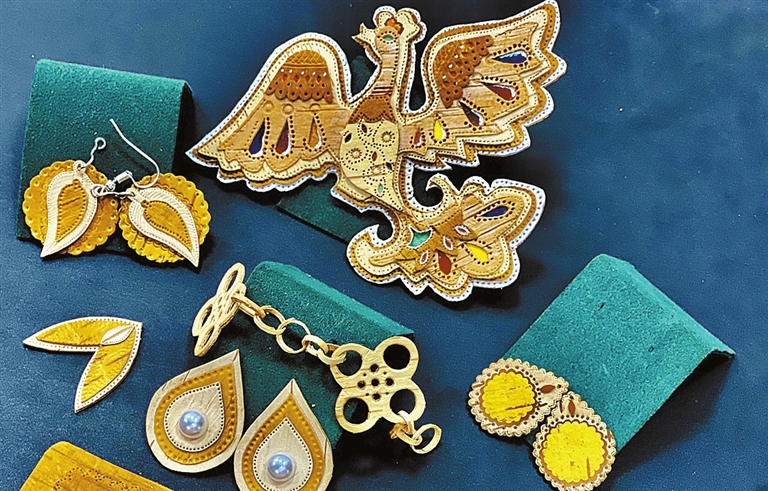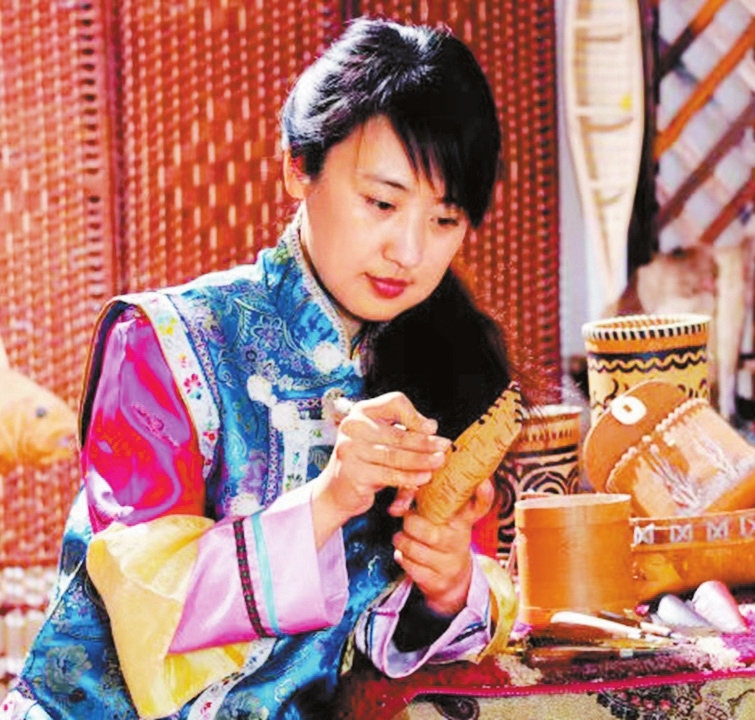

IN this era when social media become a source of inspirations and tips for many who want to catch up with the latest trends, influencers are also using their clout to promote their causes. Presenting their unique art, local delicacies, traditional clothing and cultural traditions, the young people from China’s various ethnic minority groups are also trying to make themselves heard and their cultures seen. Their traditions, appearing unique and original in videos and livestreams, have impressed many viewers as cool. In one of such videos on Bilibili, the natural patterns on a piece of birch bark are gradually transformed into a landscape painting featuring tall trees, the black-soil ground and a river. The finished scene is very similar to the local scenery of Tao Dandan’s hometown. Tao is the creator of the birch bark painting and a young-generation cultural heritage inheritor certified by Northeast China’s Heilongjiang Province. In Heilongjiang, where such ethnic minority groups as the Manchu and Oroqen call home, birch forests make a familiar scene in the wilderness and near residential blocks. For generations, the people there have been turning the bark from these trees into all kinds of items such as utensils, bags, boats or decorations. This ancient handicraft — among the first recognized national-level intangible cultural heritages — is being revived through the hard work of a new generation of inheritors like Tao. Tao from the Manchu ethnic group has held several exhibitions in other parts of China. “For people from South China, the birch bark as a material for handicrafts is unheard of,” she said. “Curious visitors would ask me ‘is this made of bamboo or paper?’” Livestreaming and video sharing platforms have also helped Tao to share this ancient craft with the young. Tao, a teacher with Heihe University, started making the ancient handicraft as a child. Under the influence of her father, who is also a folk craftsman, she later chose creating birch bark products her lifelong career. After graduating from Harbin Normal University, Tao returned to her hometown and started a small workshop making birch bark handicrafts. With a passion for fine arts, Tao also learned the courses in handicraft making during college. One of the birch bark products she is particularly good at making is birch bark paintings. Tao explained that the most important part of completing a birch bark painting is to observe the natural texture of the bark and then create paintings according to these textures. “You have to ‘respect’ the natural textures of the bark, come up with an inspiration, and build on it.” Besides birch bark paintings, Tao has also made items such as bags, bowls and jewelry cases using birch bark. This year, more people around the country will have the chance to see her works at a touring exhibition set to start in mid-October in Nanjing, East China’s Jiangsu Province. The exhibition featuring the ancient culture and hunting lifestyle of northern China’s ethnic minority groups will use digital technologies to create an interactive experience for visitors and allow them to better understand the region’s intangible heritage. The delicate handicrafts will displayed side by side with the process of making them in the form of videos at the exhibition. On streaming sites Douyin and Bilibili, Tao regularly introduces birch bark handicrafts during livestreams so that more people will get to know the art. Many children in Northeast China have learned the basics of birch bark handicrafts through her livestreams and videos. The Oroqen people also have benefited from birch bark handicrafts. More workshops for processing birch bark have been set up in Oroqen villages, increasing the villagers’ income. Boats made of birch bark are one of the most popular products turned out by the Oroqen township of Tahe, Heilongjiang. A 60-cm-long birch bark boat sells for about 500 yuan (US$75) and a villager can make 10 such boats in one week. According to the local government’s statistics, there are 12 family workshops specializing in birch bark handicrafts, whose annual per capita income has increased by more than 3,000 yuan to reach 15,000 yuan. (Global Times) | 
